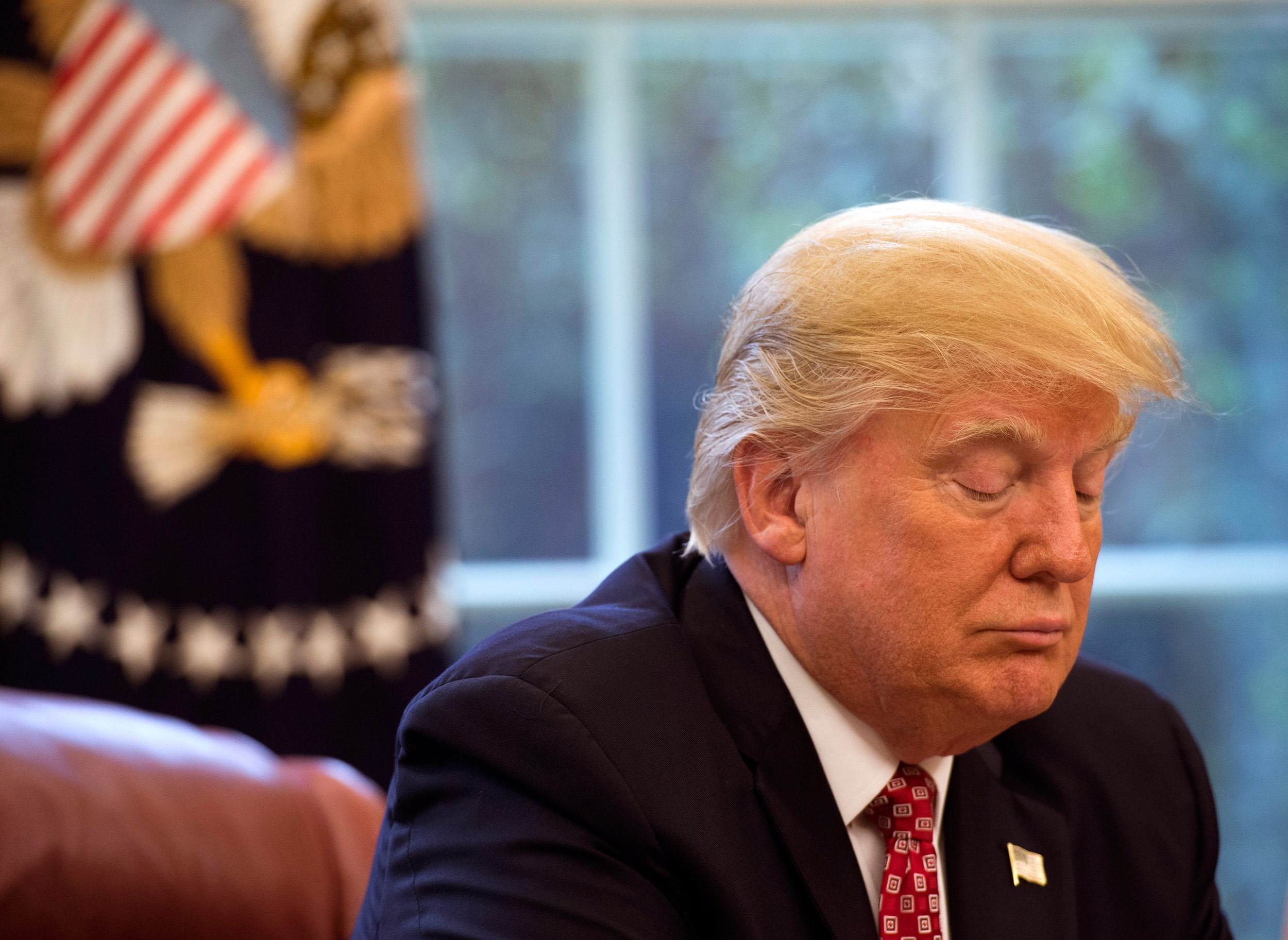100 Days in, Few Clues about Trump’s Tech Agenda

Donald Trump told us almost nothing about where he stood on some of today’s most controversial technology policy issues before he became president. Now that we’re 100 days into his administration, we’re still largely in the dark.
After running on bold promises to be tougher in national security and reverse Obama-era actions, the administration has appeared uncertain about how to navigate pressing issues like cybersecurity, regulation of the Internet, and even climate change.
Nobody knew cybersecurity could be so complicated.
Rumor has it that Trump could sign a long-awaited cybersecurity executive order Friday, but so far we’ve heard very little about the issue since he promised in January to appoint a team to deliver a plan within 90 days of his inauguration. A couple of draft executive orders have leaked, the latest of which put a major emphasis on protecting federal networks, but they’ve contained few specific agenda items. One of Trump’s top cybersecurity advisors said last month that the president would call for a voluntary effort to reduce botnets, or networks of hacked computers that cybercriminals can use to launch disruptive denial of service attacks (see “10 Breakthrough Technologies: Botnets of Things”). Overall, though, the administration has appeared unsure about how to proceed.
That’s concerning, since many experts see the cyber threat as the biggest one facing the nation. Attackers and their weapons are getting more sophisticated, and the U.S. has repeatedly been caught unprepared, most recently by attacks that disrupted the presidential campaign. The government still has not formally defined an act of cyberwarfare, and has no official rules or standards for how to respond after an attack.
Climate change: still a hoax?
Whether or not he thinks it is real, President Trump does not appear to view climate change as a problem that calls for government intervention. He signed an executive order last month that revoked several of President Obama’s executive actions on climate and called for a review of Obama’s signature Clean Power Plan. Trump’s proposed budget would gut many programs aimed at dealing with climate change and development of clean energy technology. It would also ax the energy department’s Advanced Research Projects Agency (ARPA-E), a program created by the George W. Bush administration to spur breakthrough energy innovation in areas that private sector investors deem too risky.
What the rest of the world is most interested in, though, is whether Trump will follow through on his promise to pull the U.S. out of the Paris Climate Agreement. If the administration really gets rid of the Clean Power Plan, that would cripple the nation’s chances of honoring its pledges. Still, Trump hasn’t revealed what he’ll do, and his energy secretary recently said he supports staying in the deal as long as the U.S. can “renegotiate” its commitments.
The future of Internet privacy is cloudy.
One of the few pieces of legislation that Trump signed during his first 100 days dealt a blow to consumer privacy on the Internet, by eliminating a rule that would have required Internet service providers to obtain opt-in consent from their users before “using or sharing” sensitive data including information about browsing. The move was pro-business, and an obvious shift away from the Obama administration’s approach. Mostly, though, it created uncertainty, particularly about whether the federal government under Trump will be looking out for consumers online. That will largely depend on what the administration decides to do about Obama’s net neutrality rules, whose future is also unclear.
The fight over what ISPs can do with your data is just one piece of a complicated privacy puzzle. That includes open questions about the degree to which law enforcement officials should be allowed to force Internet companies to help them access user data during investigations, and about government surveillance more broadly (see “The Next Big Encryption Fight”). Many governments are watching the U.S. closely on these issues, and international agreements for data sharing or encryption could hinge on action (or inaction) by the Trump administration.
What do you think about CRISPR, Mr. President?
How Trump will influence innovation in biotechnology has also been tough to pin down. In January he said he would focus on “accelerating FDA approvals” for new drugs. His budget proposal, however, slashes roughly a fifth of the budget for the National Institutes of Health, which could be a monumental setback for biomedical research and development.
Meanwhile, Trump has hasn’t yet mentioned our favorite biotechnology topic at MIT Technology Review, the gene editing technique CRISPR. He might want to look into that, even if only out of concern for national security.
Keep Reading
Most Popular
Large language models can do jaw-dropping things. But nobody knows exactly why.
And that's a problem. Figuring it out is one of the biggest scientific puzzles of our time and a crucial step towards controlling more powerful future models.
The problem with plug-in hybrids? Their drivers.
Plug-in hybrids are often sold as a transition to EVs, but new data from Europe shows we’re still underestimating the emissions they produce.
Google DeepMind’s new generative model makes Super Mario–like games from scratch
Genie learns how to control games by watching hours and hours of video. It could help train next-gen robots too.
How scientists traced a mysterious covid case back to six toilets
When wastewater surveillance turns into a hunt for a single infected individual, the ethics get tricky.
Stay connected
Get the latest updates from
MIT Technology Review
Discover special offers, top stories, upcoming events, and more.